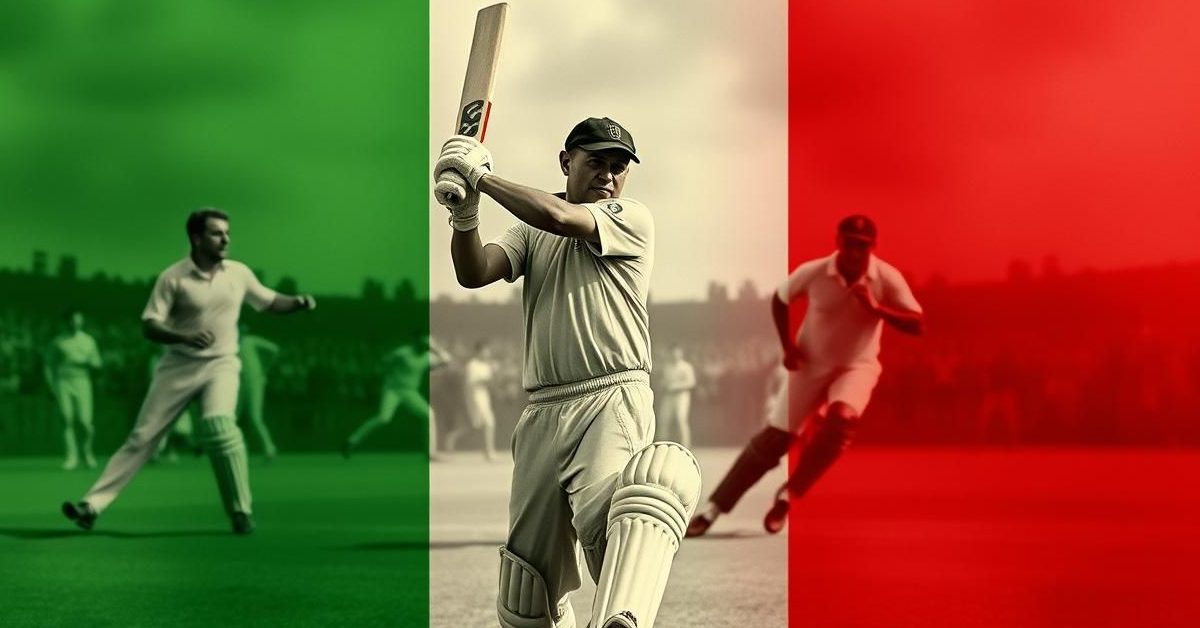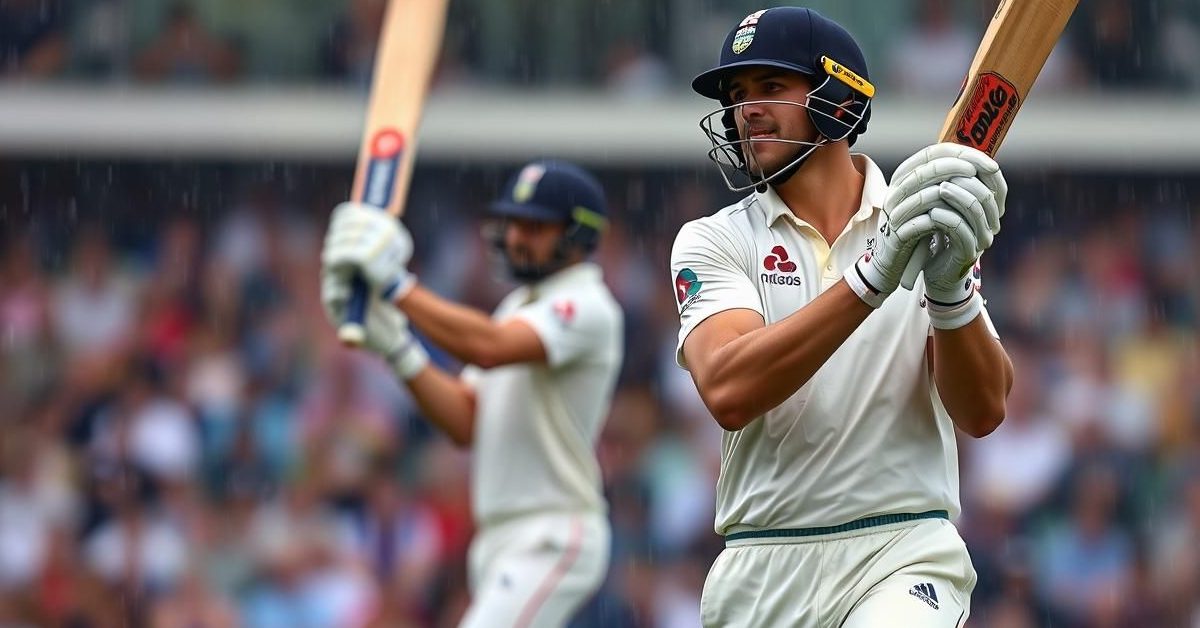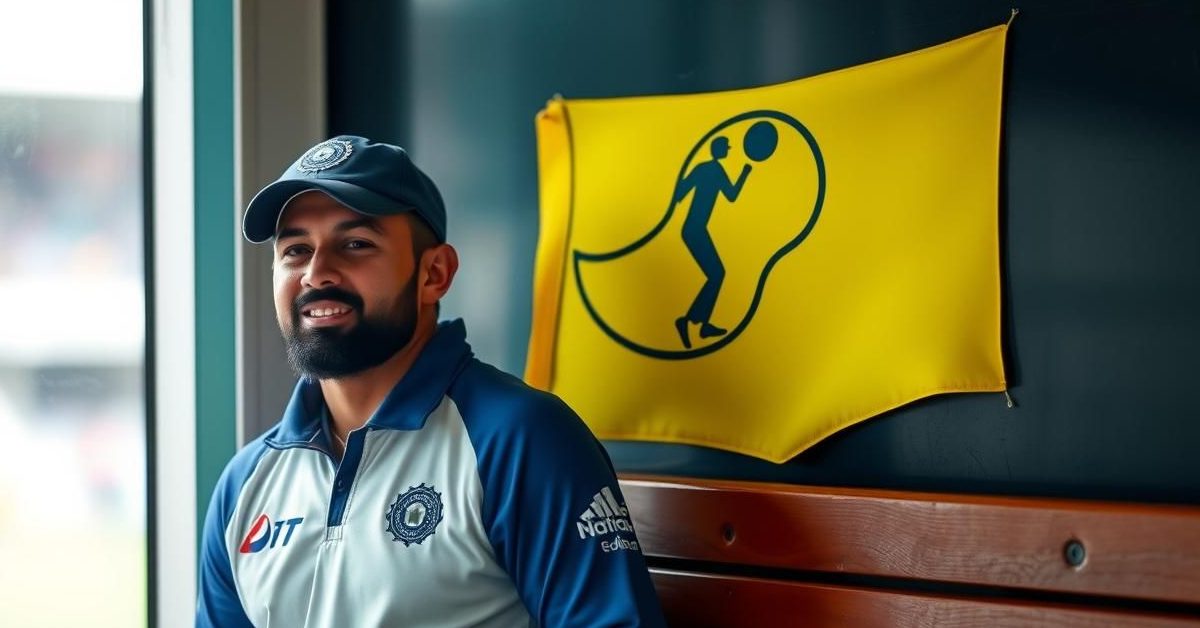Dictators Benito Mussolini of Italy and Juan Perón of Argentina, though ideologically distinct, both used football as a powerful nationalistic tool, inadvertently sidelining cricket, a sport brought by the English to their nations.
Cricket’s Early Italian Innings
Long before Italy’s recent T20 World Cup qualification, cricket had a significant presence. Horatio Nelson’s soldiers played the first recorded game in Naples in 1793. A century later, British traders established the Genoa Cricket and Football Club in 1893, a testament to the sport’s early popularity.
According to Simone Gambino, a historian of Italian cricket, the English played a crucial role in unifying Italy and heavily invested in its northern industries. This brought many Englishmen to cities like Milan, Genoa, and Turin, where both cricket and football first took root.
Mussolini’s Football Obsession
Benito Mussolini harbored a strong dislike for anything English, leading him to suppress cricket’s growth. He actively promoted football, viewing it as a vehicle for national unity and propaganda. Mussolini invested heavily in grand stadiums, restructured the national league, and even hosted the 1934 World Cup, which Italy won under a cloud of controversy and alleged match-fixing.
The Italian team’s success, including a second World Cup win, was deeply intertwined with the fascist regime’s militaristic approach, as noted by author Jonathan Wilson. Football became a powerful symbol of the state’s might and ideology.
Perón’s Playbook in Argentina
Across the Atlantic, Juan Perón in Argentina also recognized football’s immense power to galvanize public support. His government provided substantial loans to clubs for stadium construction, notably assisting his favorite club, Racing, in building the Estadio Presidente Perón.
However, it was his wife, Eva Perón, who delivered a symbolic blow to Argentine cricket. In 1947, when the Buenos Aires Cricket Club refused her request to use their outfield for a fundraising event, she ordered their wooden pavilion to be demolished and burned. Cricket historians consider this a pivotal moment, marking the brutal decline of the sport in the country.
The Tale of Clement Gibson
Argentina’s greatest cricketer, Clement Gibson, found himself caught in the regime’s crosshairs. A formidable swing bowler celebrated in England, he returned to Argentina to manage his family’s ranches. Following a dispute over his brewery, Eva Perón allegedly commissioned hitmen to eliminate him.
Gibson managed to escape and lived to the age of 76, visiting his son in England. By then, cricket in Argentina had largely receded, confined to a few remaining English families, a relic of a bygone era. While Argentina still plays cricket and might one day qualify for an expanded T20 World Cup, its glory days were undeniably curtailed.
Why Football Triumphed
The fate of sports, particularly in these nations, was significantly shaped by the whims of powerful leaders. While dictatorships certainly played a role, other factors contributed to football’s dominance. Cricket, often seen as a sport of the gentry or foreign settlers, struggled to capture the broader public imagination in the same way football did.
Football resonated with the masses, becoming the “opium” of the people in the barrios and favelas. The question of “what if” these leaders had encouraged cricket, or if the English influence had been different, invites intriguing conjectures. Ultimately, the history of sports, particularly in these regions, is inseparable from the intertwined histories of empires and the leaders who shaped them.
Dictators Benito Mussolini of Italy and Juan Perón of Argentina, though ideologically distinct, both used football as a powerful nationalistic tool, inadvertently sidelining cricket, a sport brought by the English to their nations.
Cricket’s Early Italian Innings
Long before Italy’s recent T20 World Cup qualification, cricket had a significant presence. Horatio Nelson’s soldiers played the first recorded game in Naples in 1793. A century later, British traders established the Genoa Cricket and Football Club in 1893, a testament to the sport’s early popularity.
According to Simone Gambino, a historian of Italian cricket, the English played a crucial role in unifying Italy and heavily invested in its northern industries. This brought many Englishmen to cities like Milan, Genoa, and Turin, where both cricket and football first took root.
Mussolini’s Football Obsession
Benito Mussolini harbored a strong dislike for anything English, leading him to suppress cricket’s growth. He actively promoted football, viewing it as a vehicle for national unity and propaganda. Mussolini invested heavily in grand stadiums, restructured the national league, and even hosted the 1934 World Cup, which Italy won under a cloud of controversy and alleged match-fixing.
The Italian team’s success, including a second World Cup win, was deeply intertwined with the fascist regime’s militaristic approach, as noted by author Jonathan Wilson. Football became a powerful symbol of the state’s might and ideology.
Perón’s Playbook in Argentina
Across the Atlantic, Juan Perón in Argentina also recognized football’s immense power to galvanize public support. His government provided substantial loans to clubs for stadium construction, notably assisting his favorite club, Racing, in building the Estadio Presidente Perón.
However, it was his wife, Eva Perón, who delivered a symbolic blow to Argentine cricket. In 1947, when the Buenos Aires Cricket Club refused her request to use their outfield for a fundraising event, she ordered their wooden pavilion to be demolished and burned. Cricket historians consider this a pivotal moment, marking the brutal decline of the sport in the country.
The Tale of Clement Gibson
Argentina’s greatest cricketer, Clement Gibson, found himself caught in the regime’s crosshairs. A formidable swing bowler celebrated in England, he returned to Argentina to manage his family’s ranches. Following a dispute over his brewery, Eva Perón allegedly commissioned hitmen to eliminate him.
Gibson managed to escape and lived to the age of 76, visiting his son in England. By then, cricket in Argentina had largely receded, confined to a few remaining English families, a relic of a bygone era. While Argentina still plays cricket and might one day qualify for an expanded T20 World Cup, its glory days were undeniably curtailed.
Why Football Triumphed
The fate of sports, particularly in these nations, was significantly shaped by the whims of powerful leaders. While dictatorships certainly played a role, other factors contributed to football’s dominance. Cricket, often seen as a sport of the gentry or foreign settlers, struggled to capture the broader public imagination in the same way football did.
Football resonated with the masses, becoming the “opium” of the people in the barrios and favelas. The question of “what if” these leaders had encouraged cricket, or if the English influence had been different, invites intriguing conjectures. Ultimately, the history of sports, particularly in these regions, is inseparable from the intertwined histories of empires and the leaders who shaped them.













